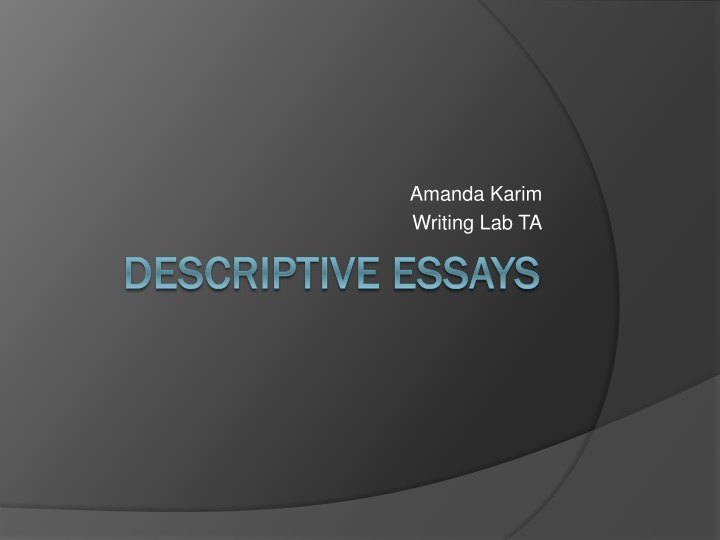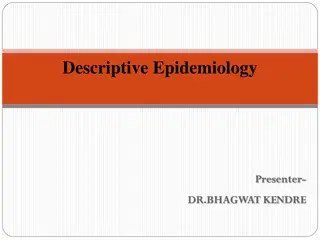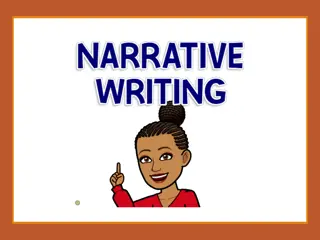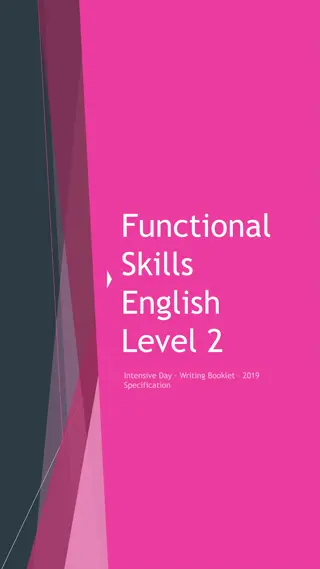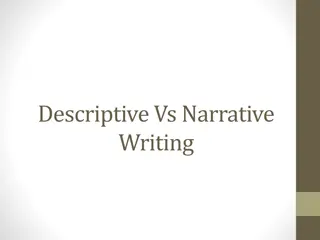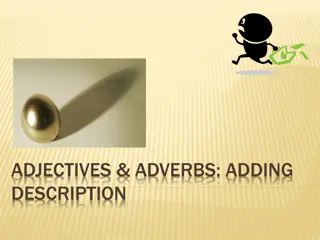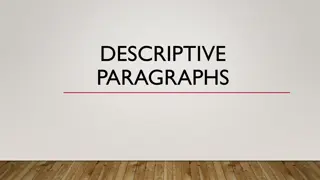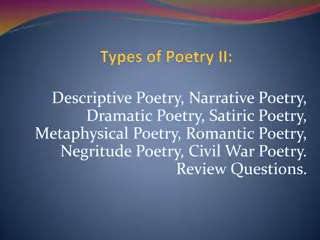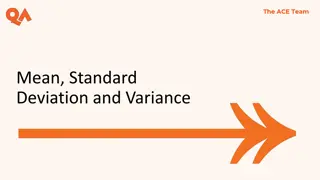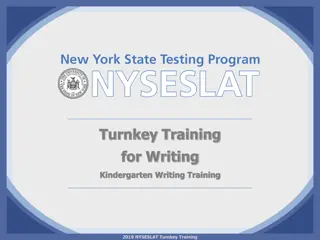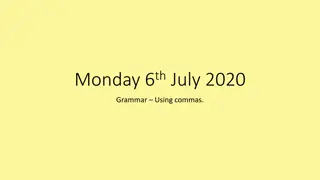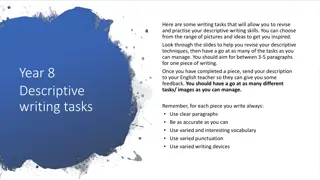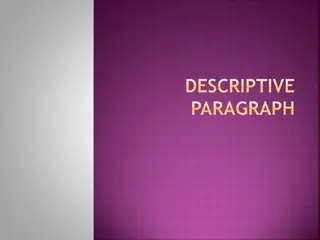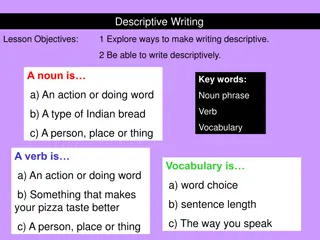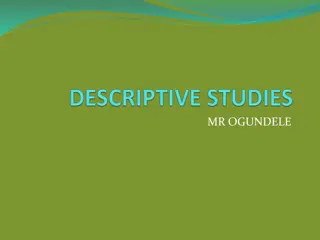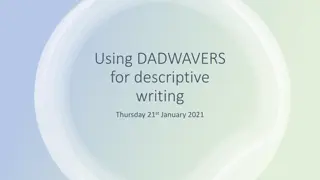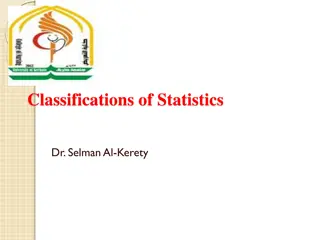Mastering Descriptive Writing Techniques
Enhance your descriptive writing skills by learning how to use detailed descriptions, engage the senses, ask crucial questions, incorporate powerful vocabulary, and avoid non-specific words. These techniques will help you create vivid and engaging narratives that captivate your readers.
Download Presentation

Please find below an Image/Link to download the presentation.
The content on the website is provided AS IS for your information and personal use only. It may not be sold, licensed, or shared on other websites without obtaining consent from the author.If you encounter any issues during the download, it is possible that the publisher has removed the file from their server.
You are allowed to download the files provided on this website for personal or commercial use, subject to the condition that they are used lawfully. All files are the property of their respective owners.
The content on the website is provided AS IS for your information and personal use only. It may not be sold, licensed, or shared on other websites without obtaining consent from the author.
E N D
Presentation Transcript
Amanda Karim Writing Lab TA DESCRIPTIVE DESCRIPTIVE ESSAYS ESSAYS
The Power of Details Rather than telling a reader about your topic, use details to show your points and make your writing stronger. When you describe something well, you help your readers use their five senses to connect with your topic.
Senses Questions What does it look like? Colors, brightness, shapes What does it sound like? Noise, silence, the kinds of sounds you hear What does it smell like? Fragrance, odors, scents, aromas, perfumes What does it taste like? Bitter, sour, sweet, tangy, etc. What does it feel like? Texture, hard, soft, rough, smooth
More Questions What is it? How many are there? What size is it? What is it made of? What is it doing? How is it doing it? Where is it located? Does it have any emotions?
Using Powerful, Specific Vocabulary When describing something, you need to use specific tools: nouns that name the object, verbs that provide an action, adjectives that provide more details about your noun, and adverbs that tell how an action is performed.
Do not Use Non-Specific Words Non-specific words may distract or bore your reader. List of non-specific words: Things, Stuff There is, there are Good, nice, bad Just, rather, quite, so
Putting It All Together When you have brainstormed all of the details, think about which ones you want to include. The details that you do include should all relate to the overall idea that you want the reader to understand. If any details do not support this idea, leave them out.
Putting It All Together In Order It is not enough to simply have all of your details support your overall idea. You also need to put your details in some logical order, so they are easy for the reader to follow. Order by time first to last Order by position left to right, top to bottom, middle to outside, etc. Order by type put similar things together
Finishing Touches Once you have determined which details to use and which order to put them in, ask yourself whether you made your point. All of your details should support your topic sentences.
Brainstorming Specific nouns Whale, tail, fins, flukes, water, ocean, sea, clouds, spray, foam, air Specific adjectives Black tail, two fins, cold water, open ocean, splashed spray, white foam, clear air Specific verbs Whale dives, tail stands, water churns, spray blows, foam surrounds Specific adverbs Dives slowly, stands straight, churns quickly, surrounds totally
Putting It All Together Non-Specific: The tail of an animal is in the air with water all around it. The water is blue and white. The tale is black. This example is boring because the writer has not used strong verbs, any adverbs, or specific nouns. The reader does not know what the object is or what it is doing, so the paragraph seems to lack a purpose.
Putting It All Together Specific: In the picture, a huge whale dives slowly into the cold water. His black tail stands straight in the clear air while the open ocean churns around it. White foam surrounds the flukes, and spray blows sideways in the wind.
